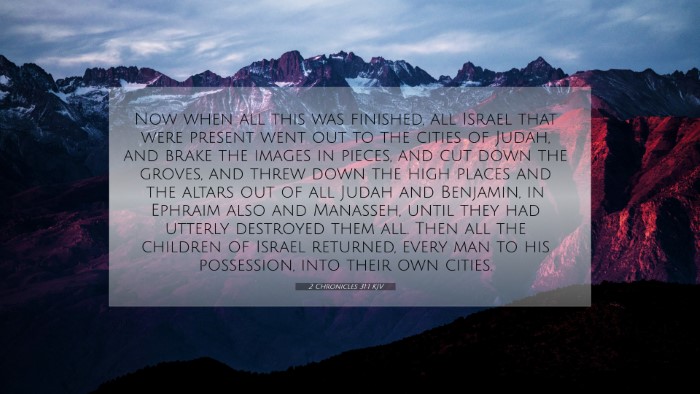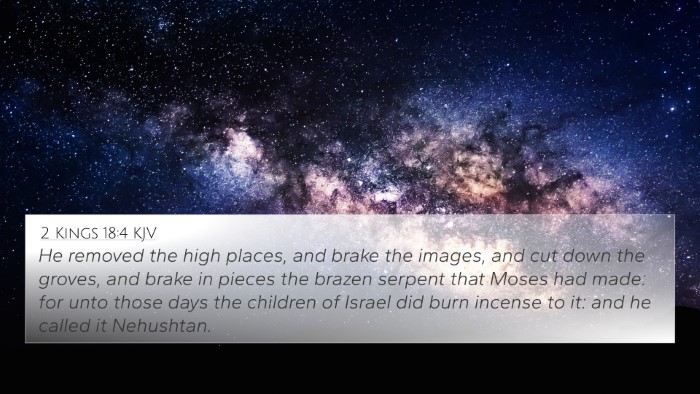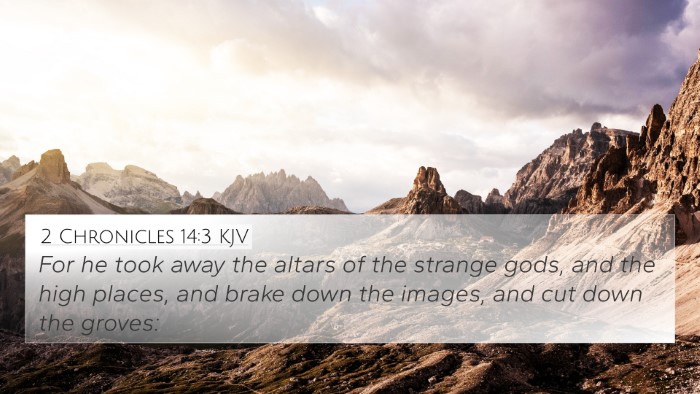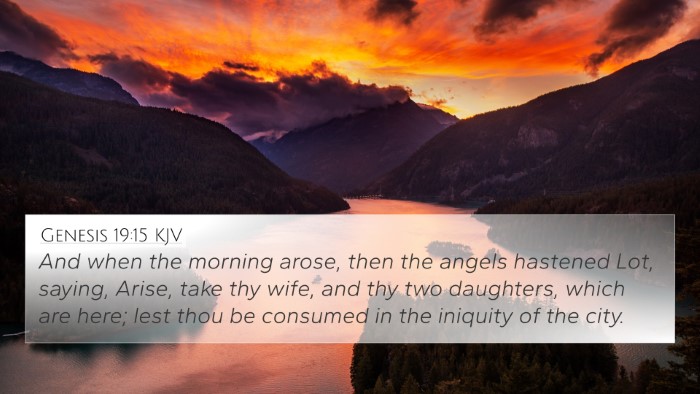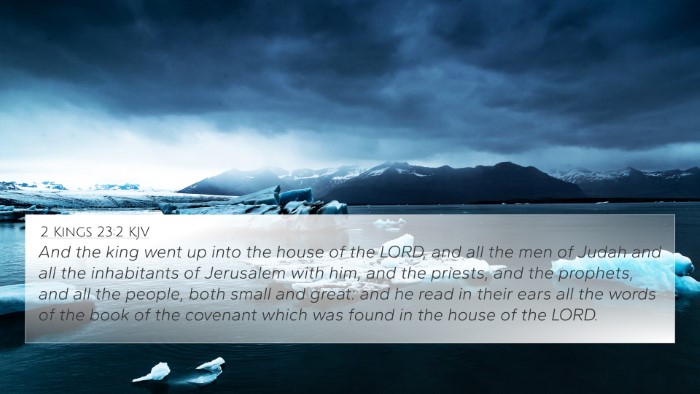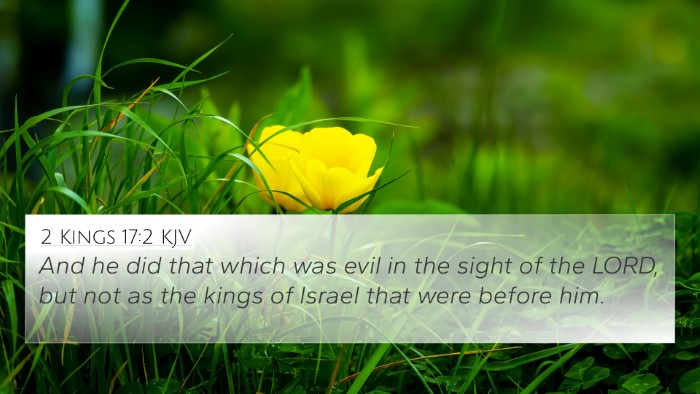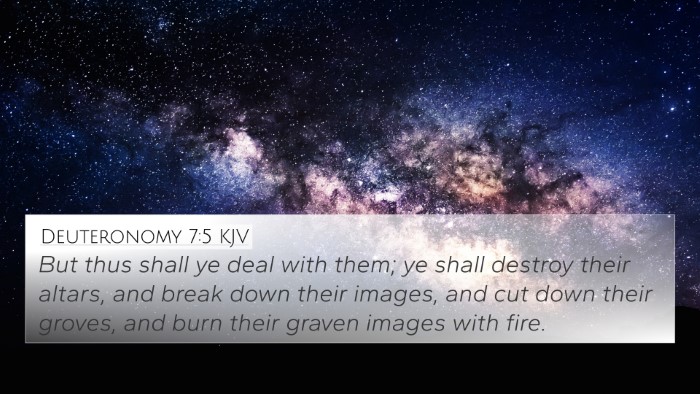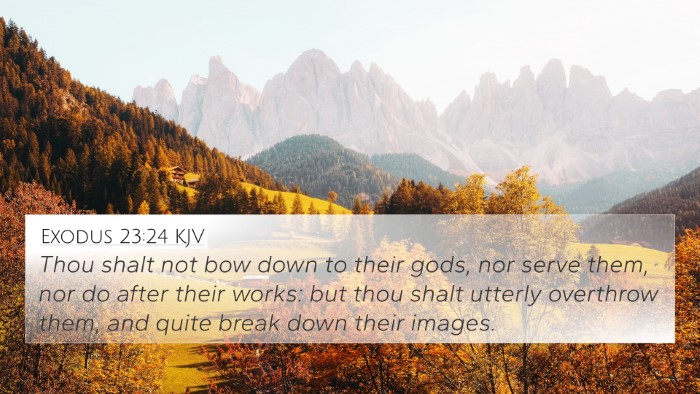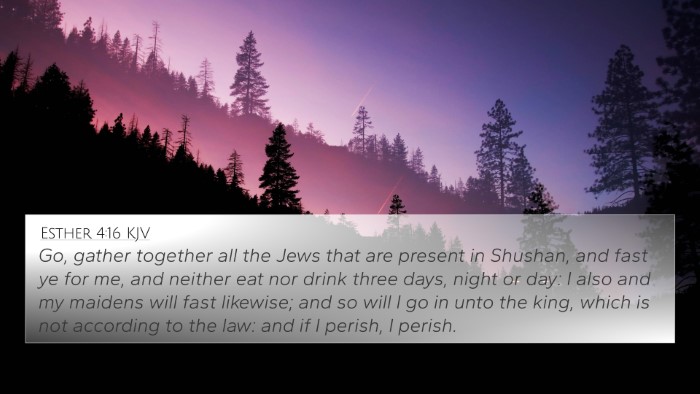Understanding 2 Chronicles 31:1
Verse: "Now when all this was finished, all Israel that were present went out to the cities of Judah, and brake the images in pieces, and cut down the groves, and threw down the high places and the altars out of all Judah and Benjamin, in Ephraim also and Manasseh, until they had utterly destroyed them all. Then all the children of Israel returned, every man to his possession, into their own cities."
Summary of Insights
This verse depicts a significant moment following the restoration of proper worship in Judah under King Hezekiah. Here, the people of Israel take decisive action to abolish idolatrous practices throughout the land. The act of breaking images, cutting down groves, and destroying high places signifies a return to monotheistic worship of Yahweh, demonstrating the community's commitment to removing foreign influences and unholy practices from their midst.
Key Themes
- Restoration of Worship: Hezekiah's reforms emphasized a return to the worship of God, fundamentally shifting the spiritual landscape of Israel.
- Collective Action: The unity of the people in this effort highlights community involvement and commitment to their covenant with God.
- Destruction of Idols: The physical destruction of idols represents a spiritual cleansing and a decisive step away from sin.
- Return to God: The actions taken in this verse symbolize a turning away from sin and a return to true worship.
Commentary Insights
Matthew Henry
Henry notes that the act of purging the land from idolatry was a testament to the people's newfound zeal for the Lord. The spiritual awakening spurred by Hezekiah's leadership prompted the Israelites to actively participate in the revival, reinforcing the collective covenant they shared with God.
Albert Barnes
Barnes emphasizes the drastic measures taken by the Israelites, highlighting the importance of removing not just the symbols of idolatry but also the places of corrupted worship. This cleansing affected not just Judah, but extended influence into the territories like Ephraim and Manasseh.
Adam Clarke
Clarke points out that this collective action underscores a key principle in scriptural obeyance—faith being accompanied by works. The actions of the Israelites demonstrate their dedication and the importance of communal effort in restoring true worship, an essential theme throughout the biblical narrative.
Cross-References and Thematic Connections
This verse is connected to several other scriptures that further elaborate on themes of worship, idolatry, and community reformation:
- 2 Kings 18:4 - Hezekiah's actions in removing high places and breaking down sacred pillars set the groundwork for reform.
- 2 Chronicles 33:12-13 - A parallel account of repentance and restoration captures the essence of returning to God.
- Isaiah 30:22 - In this prophetic declaration, God instructs His people to break their idols and embrace purity in worship.
- Jeremiah 11:14 - The warning against intercessory prayer for those practicing false worship emphasizes the need for genuine faith.
- Matthew 3:10 - John the Baptist's call for repentance resonates with the call to remove unholy practices before the coming of the Messiah.
- Romans 12:1 - Presenting oneself as a living sacrifice ties the physical act of worship to spiritual dedication.
- 1 Corinthians 10:14 - Paul admonishes believers to flee from idolatry, echoing the sentiments expressed in 2 Chronicles 31:1.
Bible Cross-Referencing Techniques
For readers wanting to dive deeper into insights like those found in 2 Chronicles 31:1, utilizing tools for Bible cross-referencing, such as a comprehensive Bible concordance, can facilitate a more profound understanding.
Effective cross-reference Bible study involves:
- Using a Bible cross-reference guide to find related verses.
- Exploring thematic connections across both Old and New Testaments.
- Identifying similar situations across different eras in biblical history.
- Emphasizing how various scriptures support the same principle of worship and obedience to God.
Conclusion
2 Chronicles 31:1 stands as a powerful testament to the necessity of reforming one's life by earnest and collective effort against idolatry and sin. The cross-referencing of related biblical texts enhances the understanding of this pivotal moment in Israel's history. Applying cross-referencing methods can provide deeper insights into the character of God and the nature of true worship.


